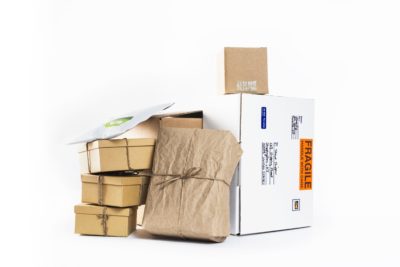Straight Talk on Parcel Shipping
An interview with Dan Galassi, parcel expert at Amware Fulfillment, a SUBTA supplier that specializes in fulfillment services for direct-to-consumer brands.
Parcel shipping costs can eat up around two-thirds of your total fulfillment budget. So, it’s a logical focus area for businesses looking to control fulfillment costs. In this Q&A article, Dan Galassi, a parcel shipping expert at SUBTA supplier member Amware Fulfillment, offers his insights on the state of the parcel shipping industry and some strategies to control costs.
Describe the current state of the parcel shipping landscape.

In a word, condensed.
While the number of shipped packages has increased steadily, the number of national companies that are competing for companies’ parcel business has done the opposite. Over the years, names like Burlington, Flying Tigers, Emery, Airborne Express and BAX Global have faded from the landscape, leaving eTailers with only a few big parcel carrier names to work with – and limited options when it comes to shopping their parcel business around and finding truly low-cost shipping.
How has that impacted national parcel carriers’ pricing?
Reduced competition is rarely if ever good news, except for the surviving companies. And it definitely hasn’t been conducive to low-cost shipping. In the eight years after most of these other carriers had exited the marketplace, UPS’s and Fed Ex’s annual rate increases were roughly double what they had been during the time when greater competition existed.
What about parcel carriers’ accessorial charges?
Many of them – like delivery area surcharges and peak season surcharges – didn’t even exist until the parcel shipping landscape turned into an oligopoly. Neither did dim weight pricing, which has added a whole new world of expense to the parcel handling landscape.
Given the oligopoly, is it impossible to create negotiating leverage with carriers?
It’s more difficult, but not impossible. There are still opportunities for shippers to negotiate shipping rates that work for both parties.
How, exactly, can B2C shippers lower shipping costs?
Well first of all, it’s important to know that negotiated rates still exist. If your company’s shipping volumes are high enough, carriers will be willing to reduce rates in order to earn or keep your business. It’s also important to note that virtually everything within an individual shipper-carrier service and pricing agreement is negotiable. So even if you aren’t able to get major concessions from carriers in one area of your agreement, you may be able to get economies in another and still achieve a win-win.
When you say that everything within an agreement is negotiable, what kinds of things do you mean?
The dim weight divisor is a huge one. While each carriers’ “official” divisor currently ranges somewhere between 139 and 166 (depending on which one you use), a savvy negotiator should be able to get your company a much higher number than that, which reduces your cost and could really pay off if you ship a lot of lightweight but large packages.
So if, for example, you’re shipping a package that’s 12 X 12 X 6 (864 cubic inches) and you’ve succeeded in negotiating a dim weight divisor that’s closer to 190, that could bring your rated weight for this larger, lightweight package down to 5 pounds, versus 6 or 7 pounds had the carrier used the “published” rate.
Any advice specifically for subscription companies?
 Fulfillment of subscription boxes can be more predictable than an eCommerce orders, and that can allow more economical shipping options. For instance, if a customer is scheduled to receive a monthly order on the same day of each month, you have an opportunity to ship the order a few days earlier using a slower, cheaper service. Rather than 2- or 3-day home delivery service from Atlanta to New York, you may be able to use a service, like FedEx SmartPost, that ships into a USPS terminal in NY for far more economical final mile delivery.
Fulfillment of subscription boxes can be more predictable than an eCommerce orders, and that can allow more economical shipping options. For instance, if a customer is scheduled to receive a monthly order on the same day of each month, you have an opportunity to ship the order a few days earlier using a slower, cheaper service. Rather than 2- or 3-day home delivery service from Atlanta to New York, you may be able to use a service, like FedEx SmartPost, that ships into a USPS terminal in NY for far more economical final mile delivery.
When people bring up the subject of shipping discounts, the word “volume” usually isn’t far behind.
Nothing speaks louder at the negotiating table than high shipping volumes. The more potential business and revenue your company promises to bring to a carrier, the more receptive that carrier will be to offering higher discounts.
But what about fledgling subscription companies that aren’t huge-volume shippers yet. How can they improve their leverage with carriers?
One strategy is to align with a 3PL that does parcel shipping on behalf of many businesses. This would mean a full outsourcing relationship that includes inventory storage, order processing and parcel management. Often, that 3PL can use its high shipping volumes as negotiating leverage and can pass along more cost-effective parcel rates.
What strategies do you suggest for companies that do have some decent shipping volumes?
A few suggestions:
- Keep your eggs in more than one basket. When you spread your shipping business across multiple carriers (including regional ones as applicable), it serves as a powerful reminder that a) there’s more of your business to be gained and b) you have other trusted partners that you can divert more of your business to if you aren’t happy with the terms you’ve been offered.
- Consider periodically putting your shipping business out to bid. Carrier reps tend to work harder to offer good deals when they’re trying to win your business, expand their share of it or prevent your business from being cannibalized by a competitor.
- Don’t be timid about renegotiating terms if circumstances change. Never assume that you have to wait until the next contract renewal to ask for a “recount.”
Any other tips to achieve lower-cost parcel shipping?
- Make sure you understand the particulars of your shipping contract, including every accessorial charge. At the end of the day, these charges may be adding more to your “fabulous” rate than you think.
- Audit your invoices to ensure your carrier is holding up its end of the bargain.
- Prepare carefully for negotiations with parcel carriers. If your carriers know more about your shipping history and patterns than you do, it’s never a good thing.
- Consider how a 3PL can help leverage its own experience and volume discounts on your behalf
